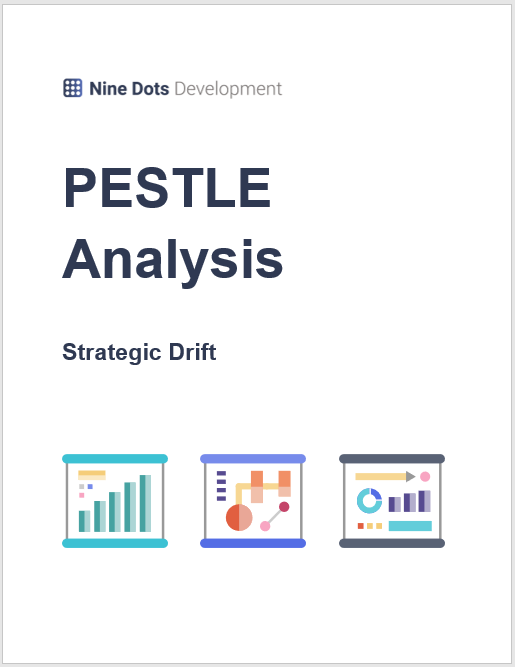Monday 07 Jun 2021 Article
The Takeaway3 Ways to Escape or Avoid Strategic Drift in Your Organisation
Understanding, Recognising and Avoiding Strategic Drift
Part 2 of 2
#StrategicDrift #PESTLEAnalysis #BusinessPlans
The perfectly matched resource for this article...
Download our PESTLE Analysis Template!
If you liked the article and are interested in downloading our PESTLE Analysis template, please click below!
Download guide!Playing catchup?
3 Ways to Escape or Avoid Strategic Drift in Your Organisation
Strategy sessions are great; you discuss, you brainstorm, and you walk away with a thought-through, supposedly foolproof plan.
But then sometimes, no matter how much time and effort you have spent creating this plan, you still don’t meet your goals.
So how can you help ensure your organisation stays on track and your business is a success?
Why Do Business Plans Fall Through?
One of the main reasons business plans fall through is that organisations fall into the trap of continuing to do what they have always done because once upon a time, it worked.
They fail to recognise, accept, and adapt to their customers’ ever-changing needs and fail to keep up with changes in their industry; in other words, they fall victim to strategic drift.
Why Does Strategic Drift Happen?
Before you learn how to prevent or escape strategic drift, you need to know why it happens.
Strategic drift happens for many reasons, including:
- Management complacency
Managers are aware of industry changes but do not react quickly enough. - A lack of market awareness
Managers are not aware of their external market and how it impacts their organisation. - Poor organisational attitude to change
Staff and their managers resist change and therefore their ways of working become outdated.
Is My Organisation Experiencing Strategic Drift?
In our previous article, we introduced you to PESTLE Analysis, a framework that helps you identify industry changes that could impact your organisation.
The easiest way to decide if your organisation is experiencing strategic drift is to, once you have completed the PESTLE framework, look at all of the changes you’ve identified, and compare them to your current strategy.
If you feel like your strategy does not align with these external changes, there’s a chance you may be experiencing strategic drift.
How Can I Reduce Strategic Drift or Prevent it Altogether?
Whether you are just starting to experience strategic drift and want to get back on track or whether you’re looking to avoid it altogether, here are 3 things you can do:
- Use the data that is at your disposal
There is an abundance of external data and information available that can help inform your strategic decision making. For example, the Office for National Statistics collects, analyses, and disseminates data about society, the economy, and the UK’s population. - Keep on top of industry trends
Regularly conduct a PESTLE Analysis to identify and keep on top of market trends, changes and external influences that could impact your organisation. You should then, after every PESTLE Analysis, review your strategy and realign it if needs be. - Develop a workplace culture that encourages feedback
As an organisation, department or even an individual, you should always be actively seeking out, analysing, and acting on feedback. Allowing staff to give their input and share their perspective can help identify areas for improvement in your business strategy that you may otherwise have not noticed.
The elementary learning point here is that you need to frequently look at your market, look at your organisation, and make sure they are headed in the same direction; there is little point in realigning your strategy now but then neglecting it again for another 6 months, a year, or even longer.
If you haven’t already, you can download our free PESTLE Analysis Template by clicking the link below to get you started.
---
We hope that you’ve taken away some valuable information from our 2-part Strategic Drift article series.
Tomorrow, we will begin looking at how you can get a return on resistance – in other words, how your staff’s resistance to change can actually benefit your business and how you can use resistance to your advantage.
This series will also give you a fantastic Force Field Analysis template, so stay tuned!
Download our PESTLE Analysis Template!
If you liked the article and are interested in downloading our PESTLE Analysis template, please click below!
Download guide!Missed an article?
More from Understanding, Recognising and Avoiding Strategic Drift
